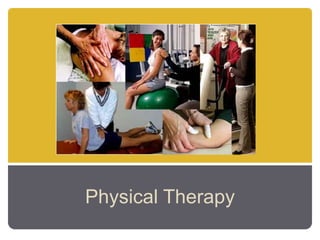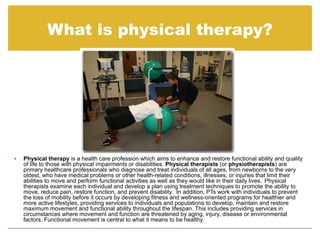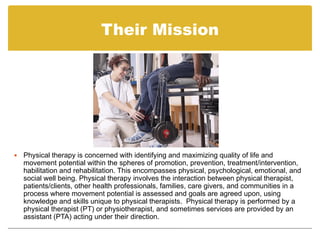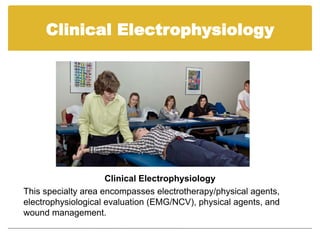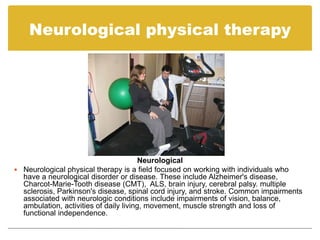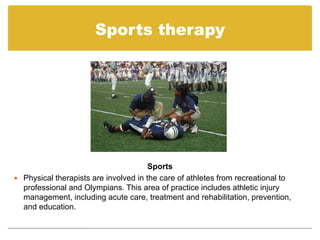Physical therapy aims to restore functional ability and quality of life for those with physical impairments. Physical therapists diagnose and treat individuals of all ages through examination, treatment plans, and promoting mobility. Physical therapy has many specialties including orthopedics, neurology, geriatrics and more. Physical therapists practice in various settings to provide individualized care.
